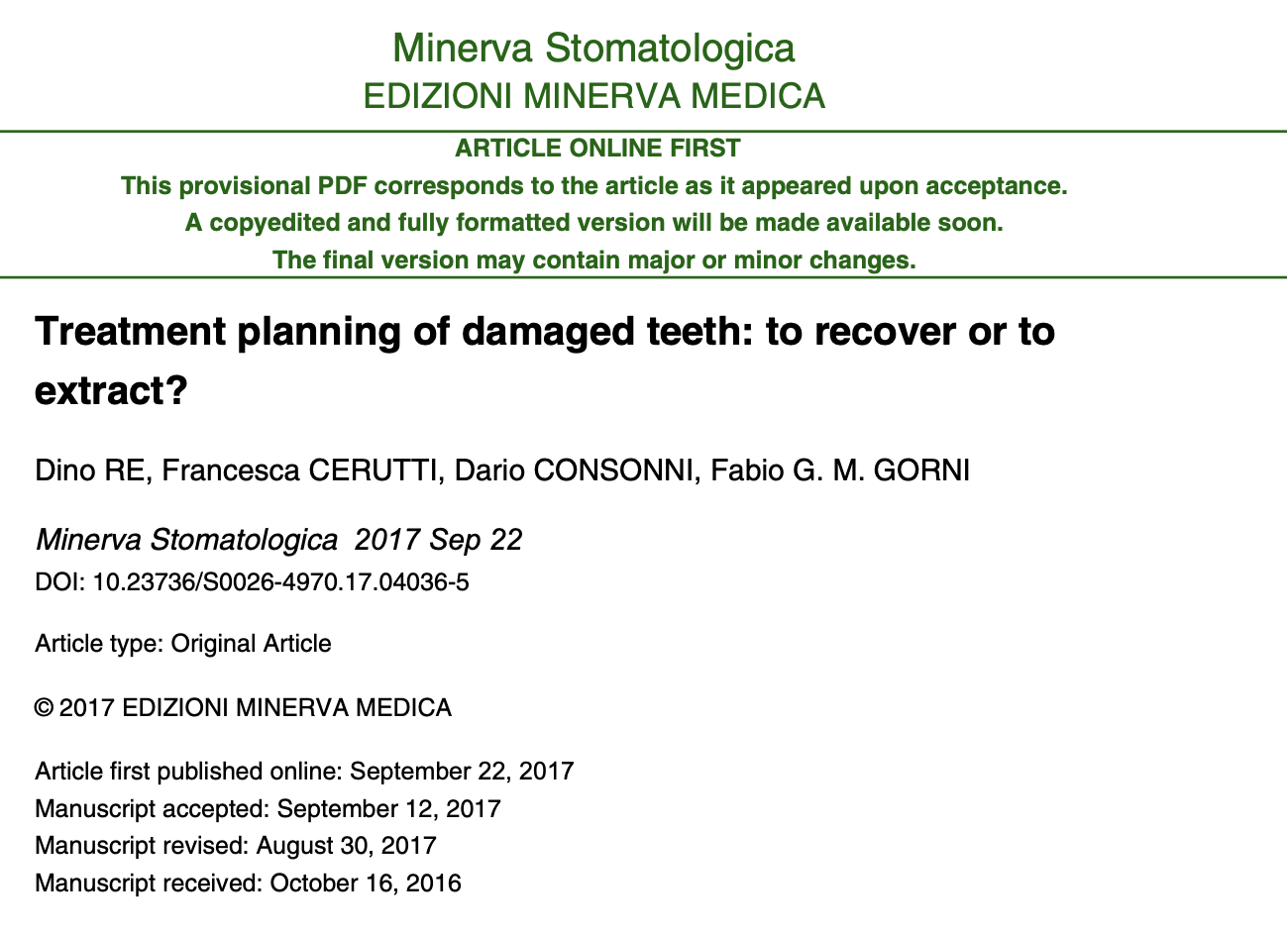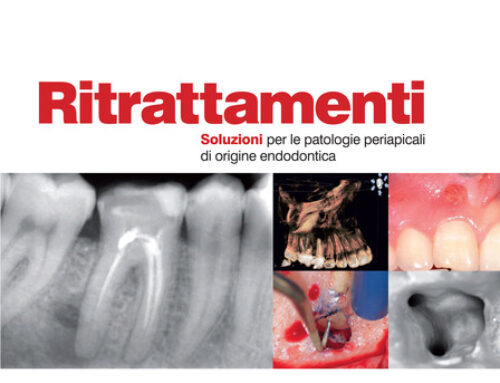Re D, Cerutti F, Consonni D, Gorni FG. Treatment planning of damaged teeth: to recover or to extract? Minerva stomatologica. 2017;66(5):201-11.
Background: Planning the treatment of a compromised tooth is challenging but the choice should refer to evidence-based criteria. The Literature proved that patient-related factors influence the treatment plan, but what happens when the patient is a dentist? Aim of the study was to observe whether the dentist goes for the same option suggested to a patient in a hypothetical scenario. Methods: 100 volunteers were interviewed singularly in a quiet ambient. Radiographs of 15 compromised teeth were shown and were identified as belonging to a hypothetical patient with non-contributory medical history asking for the best treatment. For each clinical case, the dentist could decide between: 1) Extraction (E), 2) Endo-restorative recovery (R), 3) Referral to a specialist (S) to save the tooth. After a 15-minutes wash-out, the same radiographs were shown again with the question: if this was your tooth, what would you do? The alternatives could be E or R. Statistical analysis was performed in order to evaluate the discordance between the choice taken for the patient and for the dentist’s teeth. Results: Results are reported in Tables 1-4. A constant increase in recovered teeth was observed in group D with the only exception of case 12. Concordance ranged from scarce to substantial, while symmetry showed that, when changing their mind, the dentists recovered their own teeth. Conclusions: The dentists were more conservative on their teeth: this shows the absence of a coherent decision- making pattern and stresses the need for an improvement in the formation of dental practitioners.

